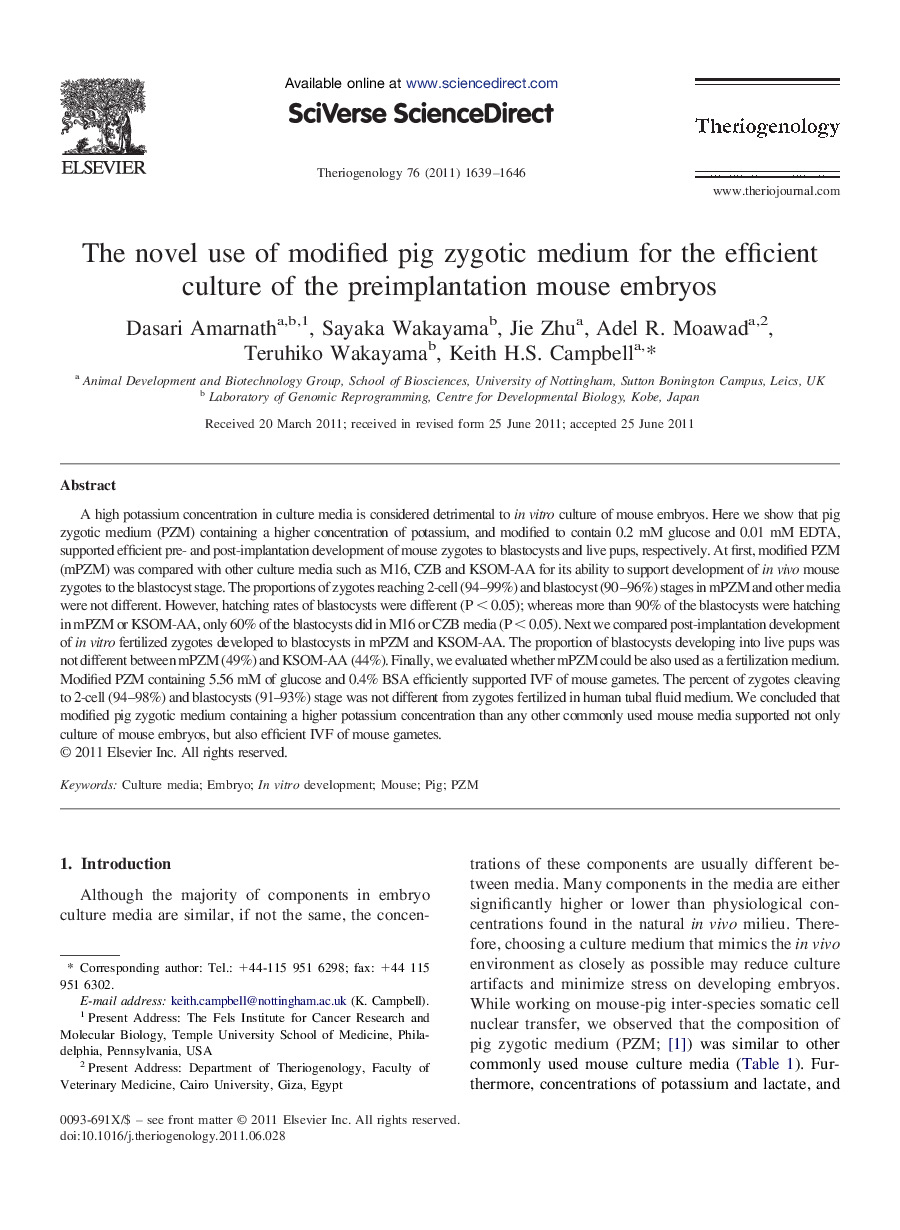| Article ID | Journal | Published Year | Pages | File Type |
|---|---|---|---|---|
| 10892559 | Theriogenology | 2011 | 8 Pages |
Abstract
A high potassium concentration in culture media is considered detrimental to in vitro culture of mouse embryos. Here we show that pig zygotic medium (PZM) containing a higher concentration of potassium, and modified to contain 0.2 mM glucose and 0.01 mM EDTA, supported efficient pre- and post-implantation development of mouse zygotes to blastocysts and live pups, respectively. At first, modified PZM (mPZM) was compared with other culture media such as M16, CZB and KSOM-AA for its ability to support development of in vivo mouse zygotes to the blastocyst stage. The proportions of zygotes reaching 2-cell (94-99%) and blastocyst (90-96%) stages in mPZM and other media were not different. However, hatching rates of blastocysts were different (P < 0.05); whereas more than 90% of the blastocysts were hatching in mPZM or KSOM-AA, only 60% of the blastocysts did in M16 or CZB media (P < 0.05). Next we compared post-implantation development of in vitro fertilized zygotes developed to blastocysts in mPZM and KSOM-AA. The proportion of blastocysts developing into live pups was not different between mPZM (49%) and KSOM-AA (44%). Finally, we evaluated whether mPZM could be also used as a fertilization medium. Modified PZM containing 5.56 mM of glucose and 0.4% BSA efficiently supported IVF of mouse gametes. The percent of zygotes cleaving to 2-cell (94-98%) and blastocysts (91-93%) stage was not different from zygotes fertilized in human tubal fluid medium. We concluded that modified pig zygotic medium containing a higher potassium concentration than any other commonly used mouse media supported not only culture of mouse embryos, but also efficient IVF of mouse gametes.
Related Topics
Life Sciences
Agricultural and Biological Sciences
Animal Science and Zoology
Authors
Dasari Amarnath, Sayaka Wakayama, Jie Zhu, Adel R. Moawad, Teruhiko Wakayama, Keith H.S. Campbell,
